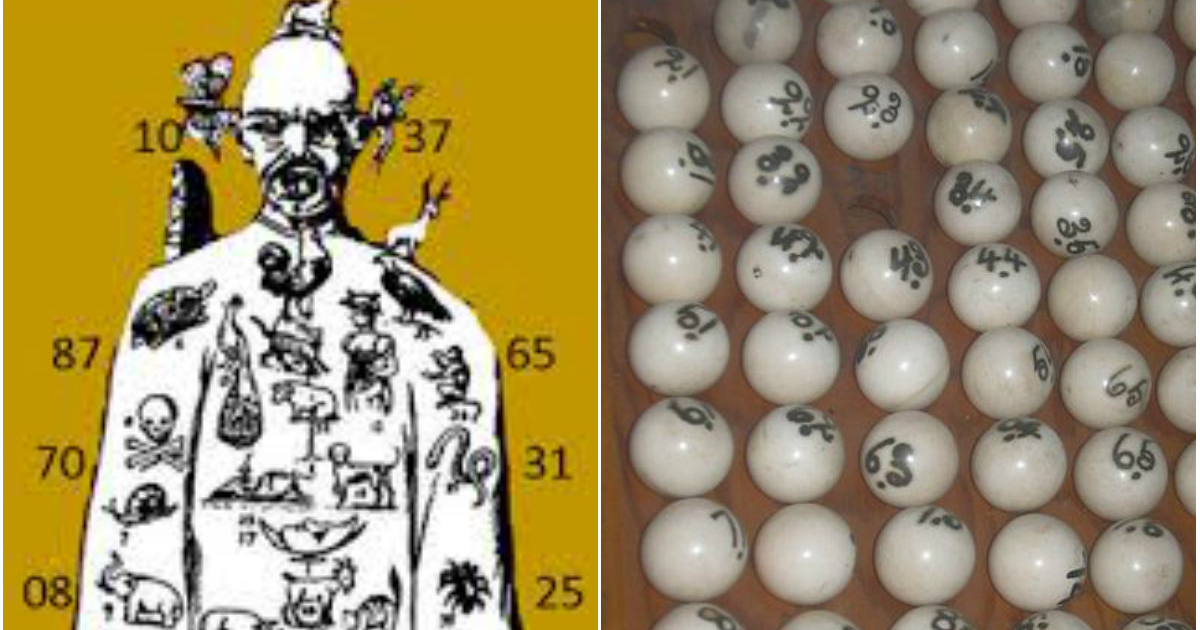
The Chinese Charade, also known as Rifa Chiffá, is the origin of the Cuban Charade or Bolita. This game of chance was introduced to the island in the second half of the 19th century with the arrival of the first Chinese migrant populations in Cuba.
The Cuban Charade is a table of consecutive numbers from 1 to 100. The first 36 numbers, or "bichos," began to circulate in 1847 when around 125,000 coolies arrived on the island from Southern China under semi-slavery conditions.
The charade involved a graphic representation of a Chinese man in traditional attire, depicting 36 numbers through drawings of their respective meanings, which included people, animals, and objects.
How did the game of Charada China emerge in Cuba?
According to an article in Habana Radio from 1873, this game of chance officially began on Lealtad Street. The initial capital was 15,000 pesos. In the early 20th century, it expanded to include 100 numbers, incorporating elements of Cuban popular culture.
"The bank has a corresponding series of cardboard or wooden tokens. It randomly selects one, wraps it in a piece of cloth, and displays it for the players to see. This operation is called 'hanging the animal.' Next, the sale of toys begins, each one marked with the Chinese character signifying a specific figure. Meanwhile, some groups walk through the streets taking bets. At the designated time, the wrapped emblem is unveiled, and the winners receive thirty times their bet," notes an article from 1962 written by the sociologist Roger Caillois.
The game was presented as a more graphic variant of roulette. In contrast, the symbols of the Rifa Chiffá were gathered according to mysterious affinities, which is why the meanings associated with each number were so important. It is believed that the enslaved African population contributed many of their knowledge to the definitive code of the Charada Cubana.
Currently, the Chinese Charade is banned by the government of Beijing, just as the Cuban Charade is sanctioned by Cuba's Penal Code. However, gambling continues to enjoy popularity and is even incorporating new technologies.
List of the 36 original numbers or creatures of the Charada
- The HorseThis number became popularly associated with the figure of Fidel Castro.
- The Butterfly
- The Sailor
- The Cat or Mouth
- The NunThis is how the 5 peso bill is popularly referred to.
- The Jicotea
- The Snail
- The Dead Man
- The Elephant
- The Big FishThis term was used for the 10-peso bill.
- The Rooster
- The Whoreor bad woman
- The Peacock or the "Tócate"to avoid mentioning the unlucky number
- The Tiger Cat
- The Dog
- The Bull
- The Moon
- The Little Fish
- The Worm
- The Fine Cat
- The Majá
- The Toad
- The Steam
- The Dove
- The Fine Stone
- The Eel
- The Wasp
- The Goat
- The Mouse
- The Shrimp
- The Deer
- The Pig
- La Tiñosa
- The Monkey
- The Spider
- The Hookah
Frequently Asked Questions about the Chinese Lottery and Bolita in Cuba
What is the Chinese Charade and how did it come to Cuba?
La Charada China, also known as Rifa Chiffá, is a game of chance that originated in China and was introduced to Cuba in the 19th century by Chinese immigrants. It became the foundation of what is now known as Charada Cubana or La Bolita, a game that remains popular despite its prohibition on the island.
How do you play Charada Cubana or Bolita?
The Cuban Charade is a gambling game based on a board of numbers from 1 to 100. Players bet on a number or a "bicho," associating it with specific meanings. Although it is prohibited by the Penal Code of Cuba, it continues to be played clandestinely with modern adaptations.
What are the original numbers of the Charada and their meanings?
The 36 original numbers of the Charada include figures such as the Horse, the Butterfly, the Sailor, and the Cat. Each number carries an associated meaning that typically represents an animal, a person, or an object, adding a cultural and symbolic element to the game.
Why does the Cuban Charade remain popular despite its prohibition?
Despite the ban, the Charada Cubana remains popular due to its cultural roots and the thrill of gambling. Resistance to government control and adaptation to new technologies have allowed the game to thrive in the underground.
Filed under:






